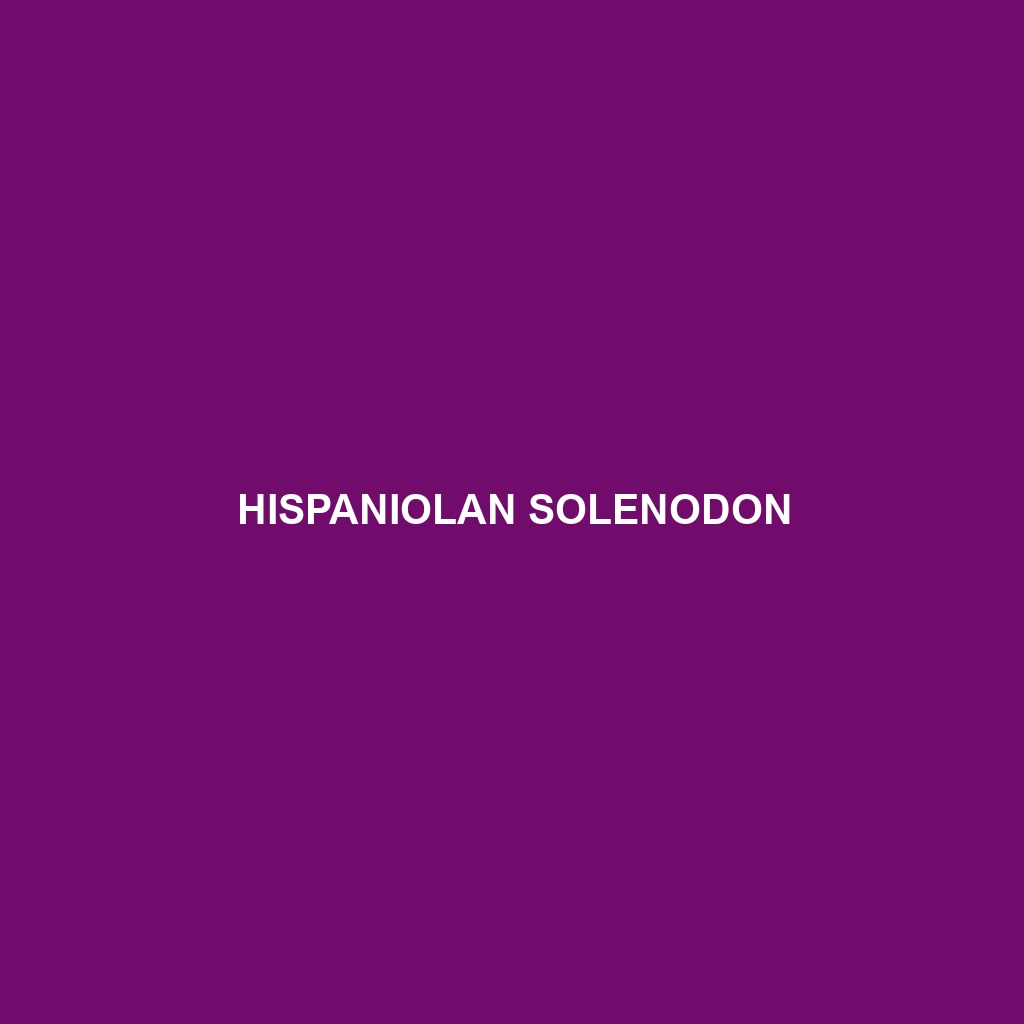Hispaniolan Solenodon
Common Name: Hispaniolan Solenodon
Scientific Name: Solenodon paradoxus
Habitat: The Hispaniolan Solenodon is primarily found in the island of Hispaniola, which encompasses Haiti and the Dominican Republic. This species thrives in a variety of environments, including moist forests, tropical rainforests, and mountainous regions. Its preference for dense underbrush and leaf litter provides essential cover and aids in foraging, making these habitats vital for its survival.
Physical Characteristics: Hispaniolan Solenodons are small, nocturnal mammals that typically measure between 25 to 30 centimeters (10 to 12 inches) in body length, excluding the tail, which can be of similar length. They possess a distinctive elongated snout, large eyes, and a brownish-gray fur coating that helps them blend into their forest environment. Their feet are equipped with sharp claws for digging, and their prominent incisors are adapted for a carnivorous diet, giving them unique physical adaptations that set them apart from other small mammals.
Behavior: Known for their solitary and nocturnal behaviors, Hispaniolan Solenodons are primarily active at night, using their keen sense of smell to navigate their environment. They are also known to create complex burrow systems for shelter. Their unique locomotion includes a distinctive hopping gait, similar to that of a rabbit. Communication among individuals often involves vocalizations, including squeaks and clicks, which play a critical role in social interactions and territorial disputes.
Diet: The diet of the Hispaniolan Solenodon mainly consists of insects, worms, and small vertebrates, reflecting its carnivorous eating habits. They also consume fruits and vegetation when prey is scarce. This diverse diet underscores their role as an insectivore, helping control insect populations in their ecosystems, which makes them an essential component of their food web.
Reproduction: Hispaniolan Solenodons have a relatively unique reproductive cycle, with breeding occurring primarily from April to July. The gestation period lasts around 60 days, after which a single young is born. The offspring, which are initially blind and helpless, stay with their mother until they are old enough to fend for themselves. This low reproductive rate contributes to their vulnerability, as it limits population recovery in the face of environmental threats.
Conservation Status: The Hispaniolan Solenodon is currently listed as Vulnerable by the International Union for Conservation of Nature (IUCN). Habitat loss due to deforestation and human encroachment poses significant threats to their survival. Additionally, they are susceptible to predation from invasive species such as rats and feral cats, which further endangers their population.
Interesting Facts: The Hispaniolan Solenodon is one of the few surviving members of an ancient lineage that dates back over 76 million years, making it a living relic of the past. It possesses a unique venomous bite, injected through grooves in its incisors, which is quite rare among mammals.
Role in Ecosystem: As an insectivore, the Hispaniolan Solenodon plays a crucial role in maintaining the ecological balance by controlling insect populations. Its foraging habits help aerate the soil and promote nutrient cycling, further benefiting plant growth in its habitat. Additionally, the presence of this species indicates a healthy ecosystem, as they require specific environmental conditions to thrive.
